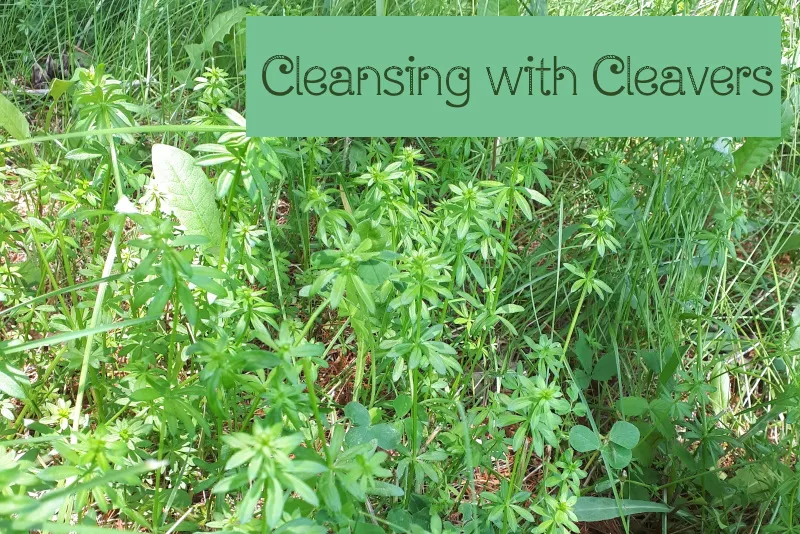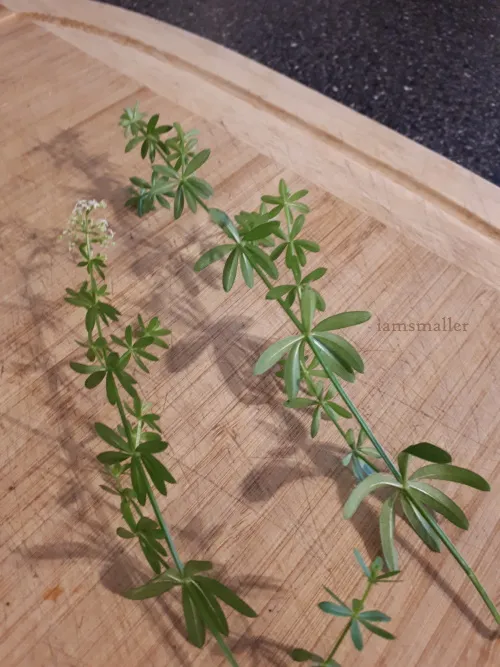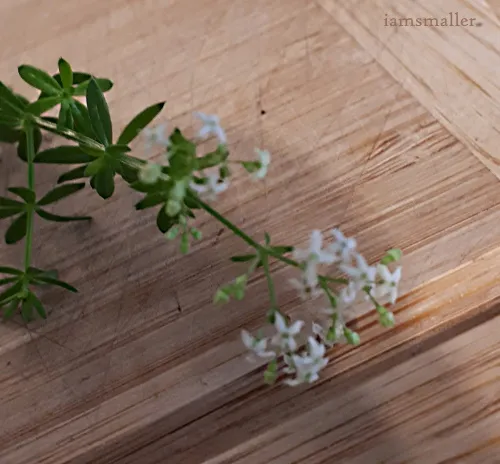Also known as bed-straw or goosegrass, cleavers (Galium aparine) is considered a weed by most people since it seems to take hold anywhere and spread like green wildfire. But, like most “weeds”, cleavers has great medicinal properties that gives it a lot of value to offset its possible annoyance.

(all photos mine)
One noticeable quality of cleavers that can help you identify it, is the way to seems to cling or stick to your clothes. It's not obviously hooked like a burr though. There are very fine hairs along the stems that like to grab anything that gets near.

The low-growing plant grows with whorls of leaves at intervals along the length of the stem. Hard to describe but I think the photos should help.

Flowers are very small and hard to photograph!
Medicinal Benefits of Cleavers
The biggest medicinal quality of cleavers is in cleansing, specifically the kidneys, bladder and the lymphatic system. It works as a diuretic which can help with water retention or edema. And like many other herbal medicines, it can also help reduce overall inflammation as well. It's probably the best known as a remedy for UTIs because of these qualities.
A lesser-known possible effect of cleavers is that it can stimulate perspiration, another avenue to get rid of toxins during a cleanse.
And that's just on the inside. Cleavers is a powerful herb for external or topical uses too. Rashes, eczema, other general skin irritations can all be soothed with a cleavers preparation.
Edible too!
I've snacked on some tender cleavers shoots and not really loved it. I'll eat lamb's quarters or clover right off the plant, but not to keen on cleavers even if it is healthy to eat. If you want to use it when you forage for edibles, you may want to stick to cooking it.
How to Use Cleavers
That depends on what you hope to accomplish. For most internal uses, like kidney cleansing, UTI treatment or reducing inflammation, you can use a tea or even a tincture. Teas are easiest, especially if you like to make your own herbal medicines.
For skin issues, tea can be helpful but making a poultice or balm would be a more direct method of using cleavers. Use the fresh herbs if you are going the poultice route.
To make cleavers tea, just use a heaping tablespoon of dried herbs (leaves and flowers), in a cup of very hot water. Try not to use truly boiling water or you can destroy some of the compounds within the leaves. Let it steep for 10 to 15 minutes then strain out the plant bits. Drink with a little sweetener.
If you are going to collect wild cleavers, be careful not to confuse it with young wild alfalfa. I find they look quite similar, especially when mixed in with other plants.
Resources:
https://healthbenefitsof.org/health-benefits-of-cleavers-plant/
https://www.verywellhealth.com/cleavers-health-benefits-5084341
https://thebackyardherbalistschool.com/cleavers-a-common-weed-with-amazing-plant-medicine
